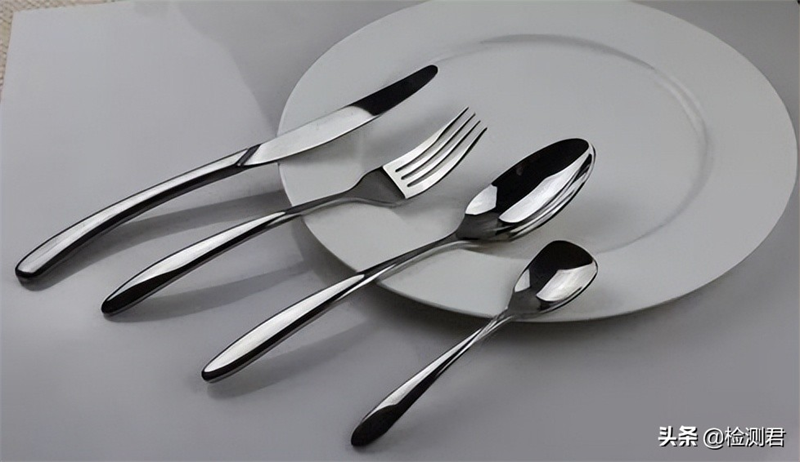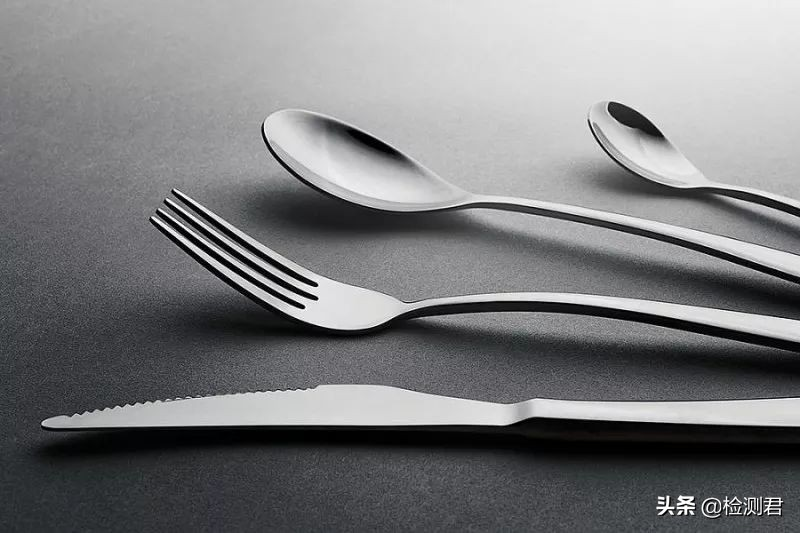Stainless steel tableware, defines the tableware formed by stamping stainless steel plate and stainless steel rod. The products it includes mainly include spoons, forks, knives, complete sets of cutlery, auxiliary cutlery, and public cutlery for serving on the dining table.
Our inspection usually needs to pay attention to the following common points for such products:
1. The appearance should not have serious drawing marks, pitting and light difference caused by uneven polishing.
2. Except for the knife edge, the edges of various products should be free of sharp edges and stabs.
3. The surface is smooth and clean, no obvious drawing defects, no shriveled bore. There is no quick mouth or burr on the edge.
4. The welding part is firm, there is no crack, and there is no scorch or thorn phenomenon.
5. The factory name, factory address, trademark, specification, product name and item number should be on the outer package.
Inspection point
1. Appearance: scratches, pits, creases, pollution.
2. Special inspection:
Thickness tolerance, weldability, corrosion resistance, polishing performance (BQ resistance) (pitting) are also never allowed in spoons, spoons, forks, making, because it is difficult to throw it away when polishing. (Scratches, creases, contamination, etc.) These defects are not allowed to appear whether it is high-grade or low-grade
3. Thickness tolerance:
Generally speaking, different stainless steel products require different thickness tolerances of raw materials. For example, the thickness tolerance of Class II tableware generally requires a higher thickness of -3~5%, while the thickness tolerance of Class I tableware generally requires -5%. The requirements for thickness tolerance are generally between -4% and 6%. At the same time, the difference between domestic and foreign sales of products will also lead to different requirements for the thickness tolerance of raw materials. Generally, the thickness tolerance of export product customers is relatively high.
4. Weldability:
Different product uses have different requirements for welding performance. A class of tableware generally does not require welding performance, and even includes some pot enterprises. However, most products require good welding performance of raw materials, such as second-class tableware. Generally, the welding parts are required to be flat and straight. There should be no scorch at the welded part.
5. Corrosion resistance:
Most stainless steel products require good corrosion resistance, like Class I and Class II tableware. Some foreign merchants also do corrosion resistance tests on the products: use NACL aqueous solution to heat it to boiling, pour out the solution after a period of time, wash and dry, and say Weight loss to determine the degree of corrosion (Note: When the product is polished, due to the Fe content in the abrasive cloth or sandpaper, rust spots will appear on the surface during the test).
6. Polishing performance (BQ property):
At present, stainless steel products are generally polished during production, and only a few products do not require polishing. Therefore, this requires that the polishing performance of the raw material is very good. The main factors that affect the polishing performance are as follows:
① surface defects of raw materials. Such as scratches, pitting, pickling, etc.
②The problem of raw materials. If the hardness is too low, it will not be easy to polish when polishing (the BQ property is not good), and if the hardness is too low, the surface is prone to orange peel during deep drawing, thus affecting the BQ property. BQ properties with high hardness are relatively good.
③ For the deep-drawn product, small black spots and RIDGING will appear on the surface of the area with a large amount of deformation, which will affect the BQ performance.
Inspection points for table knives, medium knives, steak knives and fish knives of stainless steel tableware
First
Knife handle pitting
1. Some models have grooves on the handle, and the polishing wheel cannot throw them, resulting in pitting.
2. Generally, for domestic production tools, customers require 430 materials, and only 420 materials are used in actual production. First, the polishing brightness of 420 material is slightly worse than that of 430 material, and secondly, the proportion of defective materials is also larger, resulting in insufficient brightness after polishing, pitting, and trachoma.
second
Such products are inspected on request
1. The brightness is required to be able to reflect the human face, without serious silk marks, and uneven polishing causes light difference.
2. Pocks. Trachoma: More than 10 pits are not allowed on the whole knife. Trachoma, 3 pits are not allowed within 10mm of a single surface. Trachoma, one 0.3mm-0.5mm pit is not allowed on the whole knife. trachoma.
3. Bumps and abrasions are not allowed on the tail of the knife handle, and polishing is not allowed in place. If this phenomenon occurs, it will cause rust in the future use process. The welding part of the cutter head and the handle is not allowed to have browning phenomenon, insufficient polishing or poor polishing. Knife head part: The knife edge is not allowed to be too flat and the knife is not sharp. It is not allowed to have a too long or too short blade opening, and attention should be paid to safety hazards such as thin scraping on the back of the blade.
Inspection points of stainless steel tableware for meal spoons, medium spoons, tea spoons and coffee spoons
Generally speaking, there are fewer problems with this type of tableware, because the raw materials are better than the materials used for the knives.
The place to pay attention is generally on the side of the spoon handle. Sometimes workers are lazy in production and will miss the side part and not polish it because its area is small.
In general, a large spoon with a large area is generally not a problem, but a small spoon is prone to problems, because the production process of each spoon is the same, but the small area and volume will cause a lot of trouble to the production process. For example, for a coffee spoon, the handle of the spoon is stamped with a LOGO stamp. It is small in size and small in area, and the thickness is not enough. Too much force on the LOGO machine will cause scars on the front of the spoon (solution: re-polish this part).
If the force of the machine is too light, the LOGO will be unclear, which will lead to repeated stamping by workers. Generally, repeated stamps are not allowed. You can inspect the products to be ordered, and bring back the samples to the guests to determine whether they pass or not.
Spoons generally have poor polishing problems at the waist of the spoon. Such problems are generally caused by insufficient polishing and polishing, and the polishing wheel is too large and not polished in place.
Inspection points for fork, middle fork and harpoon of stainless steel tableware
First
fork head
If the inner side is not polished in place or forgotten and not polished, generally the inner side will not require polishing, unless the customer specifically requires the high-grade product to require polishing. This part of the inspection does not allow the appearance of dirt on the inside, uneven polishing or forgetting to polish.
First
fork handle
There are pitting and trachoma on the front. Such problems are in accordance with the table knife inspection standard.
Post time: Aug-24-2022







